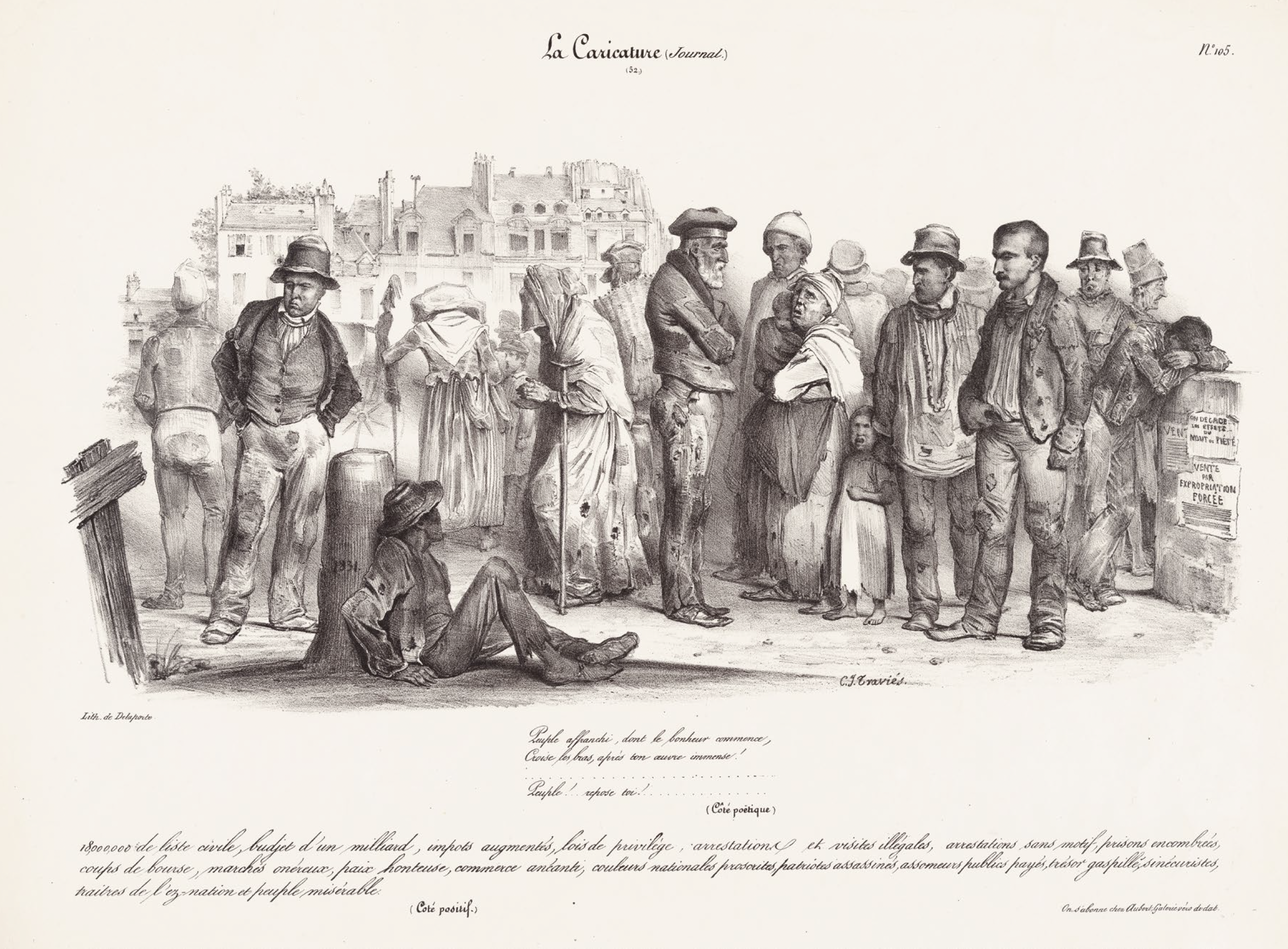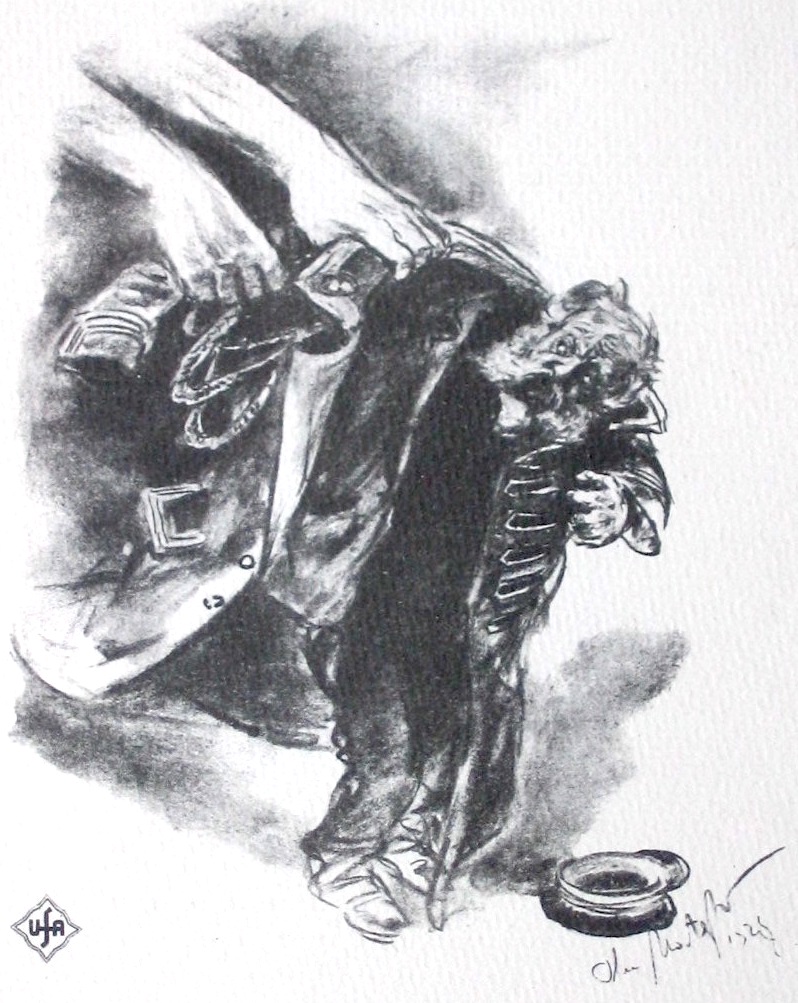Horst Moser]
[April 1, 2007
Heinrich Ehmsen: artistic witness of the Munich Revolutionary Days
I began my preoccupation with Heinrich Ehmsen at the end of the 1970s when I was studying at the Akademie der Bildenden Künste in Munich. In a study group concerned with exploring the image production during the Munich soviet republic, I took over the research on the topic of reportage drawing. It quickly became clear that Ehmsen was the most important artist who in drawings and paintings depicted the events of 1918/19.
Frequent contact with Lis Bertram-Ehmsen, the painter’s partner, was very beneficial to gathering background information. In 1979, I was able to take photos of many unpublished pictures and drawings in Ehmsen’s studio in East Berlin. Today, some (partially lost) works only exist on file cards of work indexes with stamp-size reproductions frequently out of focus. Most of them are unpublished. I displayed some of these reproductions in the work for my finals in art history in 1979 (“Die Erschießungsbilder Heinrich Ehmsens” [Heinrich Ehmsen’s Execution Pictures]). A brief description of the theme can also be found in the book “München 1919,” which gives a summary of the results of our study group.
Since only few people know Ehmsen, here are some biographical dates: born on August 9, 1886 in Kiel, Germany; from 1901 to 1906 apprenticeship as a scene painter; from 1906 to 1909 arts and crafts school in Düsseldorf. Heinrich Ehmsen resided in Paris from 1909 to 1910, where he became acquainted with Picasso, Braque, Matisse, and other painters. From 1911 on, he worked as a freelance artist in Munich. He had close contact with the painters of Der Blaue Reiter, which can be felt in his early works. From 1914 to 1918, he was a soldier in France and Romania. Ehmsen was at the front for a total of fifty months during World War One. In Munich, he witnessed the revolution and the soviet republic of 1918/19 as well as its crushing. 1920 solo exhibition in Munich; 1929 move from Munich to Berlin; from 1928 on, participation in the exhibitions of the “November Group” in Berlin; 1932 a nine-month journey through the USSR. 1933 exhibition ban and removal of his pictures from fifteen German museums; 1945 appointment to the Hochschule für Bildende Künste in Berlin (Charlottenburg); 1949 signing of the “Parisian Peace Manifesto,” which led to his dismissal from the academy (West); 1950 appointment to the Deutsche Akademie der Künste zu Berlin (East). Died on May 6, 1964.
Heinrich Ehmsen created around twenty paintings and one hundred drawings and graphics having to do with the Munich revolution of 1918/19. Some of these works were painted over or have been lost. If one takes the intensity and productivity as a yardstick, one can assume that Ehmsen was concerned with no other theme more than with the events in Munich in 1919. He described his situation at that time as follows: “I was torn away in 1914 from my fanatical work in Munich by the war, which led me to the mire of Flanders, to the blood-soaked trenches on the Somme and in Verdun. // I then became a fighter against the war and for peace. // Upon returning home to my studio in Munich, after the insanity of mass murder, now under the rage of the rattling and din of civil war, I found all work in the studio from earlier times to be trivial, worth nothing. Suppressed memories of my youth, the years in the barrack square and on the battleground, experiencing the execution of revolutionaries urged me, forced me, to bring them into a creative form. L’art pour l’art is not my cup of tea. I must cry out what is inside of me through form and color. // Compassion for the maltreated creature, anger against the torturer.”
Heinrich Ehmsen, Execution Scenes, Munich 1919 (pencil drawings and etching)
In 1918, there was a naval revolt in Kiel after orders to go into action were issued—to “retrieve the Kaiser’s honor”—that were equivalent to suicide squads. These mutinies were the prelude to the German revolution. Supported by the spontaneity of the hungry, war-weary masses, the movement quickly spread to other north German port cities and then across the entire Reich. Workers’ and soldiers’ councils were established, which took control of the old powers, who capitulated without resistance.
In Munich, following the end of the Wittelsbach monarchy, there was a rapid succession of different phases of the soviet system. First, the humanistic-socialist “Schriftstellerrepublik” (republic of writers) headed by Minister President Kurt Eisner. After Eisner was assassinated on the street by the monarchist Graf Arco, the soviet movement became more radical, until it reached its final, socialist-communist phase following the model of Russia. The opponents of the revolution—the military and the conservative bourgeoisie—joint ranks to retaliate. Led by right-wing veterans of World War One, the “whites” marched into Munich and fierce battles and executions followed.
The revolution cost ten lives in Munich. The victims were members and sympathizers of the Germanic, anti-Semitic “Thule Society,” who were shot as hostages. They ran a spying and propaganda office in an annex of the “Vier Jahreszeiten” hotel, distributing leaflets against the soviet regime and, above all, providing local citizens willing to fight with money and forged identity cards so they could leave Munich and reach the assembly points of the volunteer free corps in southern Bavaria. The “Thule Society” was decisively involved in founding the German Workers’ Party, which was later renamed to NSdAP (National Socialist German Workers’ Party). The incident, which was to go down in history as the “hostage murder,” formed the basis for fabricated horror stories which, in turn, served as justification for the brutal murders by the “whites.” The “liberation” of Munich by the “white” troops cost hundreds of lives (according to Ludwig Morenz 588, Bernt Engelmann speaks of 1200).
In 1933, the founder of the Thule Society, Rudolf von Sebottendorff, wrote: “Now it can finally be said … that the Thule members did not die as hostages … . They died for the swastika, they were victims of Juda …” In autumn 1919, a memorandum of the Munich police headquarters stated: “It is correct that, apart from the execution of hostages, there were no murders, arsons, rapes, plundering of large food stores, or the general expropriation of private property during the period of the soviet government. The nonsensical rumors of the communization of women, too, were wrong and thus detrimental.” This result of an official investigation was not published, though.
Ernst Toller in 1919 energetically distanced himself from the hostage murder and, as one of the leaders of the soviet government, released the remaining prisoners. He later wrote: “The German public associates with the term ‘Bavarian Soviet Republic’ the notion of horrible atrocities and bloody deeds culminating in the ‘hostage murder.’ Only very few are aware that the rule of blood and atrocities is, as so often, logificatio post festum, giving meaning afterwards, not least to justify the deeds of the whites …”
Heinrich Ehmsen wrote: “In the barrack square of the so-called Leiber, the Bavarian Leibregiment, on Theresienstraße, chattering machine guns killed the revolutionaries along the wall. I obsessively painted and drew the incident because I was outraged. It took years until I had surged all I had experienced from my soul through my work.” In almost all of Heinrich Ehmsen’s execution pictures, one sees the scene from above. It is possible that he was able to observe the atrocities of the “white” troops from his studio which was located on Theresienstraße in 1919.
In early May, after the “whites” entered the city, the execution prison Stadelheim served to collect prisoners and as an execution site. Heinrich Ehmsen wrote nothing about his Stadelheim drawings. The only reference is the caption of a drawing. Based on this, one can attribute similar works due to the matching building facilities.
The terror of the “whites” also included the murder of writers. A telegram dated 5/19/1919 to the Bavarian government in Bamberg: “we ask you, in the interest of the rule of law, not to shoot anybody who has not been convicted by a court of law of a crime punishable by death. in particular not landauer, who in speech and writing has always rejected the use of force. the league for advancing humanity pp professor albert einstein …” Gustav Landauer, among others, was murdered under brutal conditions on May 2 in Stadelheim.
From a humanistic position, Heinrich Ehmsen condemned the atrocity at the Luitpold High School (hostage murder) just as he did the murders of the “whites.” In both cases he takes the side of the victims. Here is a quote of Heinrich Ehmsen in which he states that he aims for a “humanistic art”: “In my work, I always start with actual experiences and real insights. My aim is to be entirely at the service of humanity, to preach humanism with my means of creativity in color and form … Creative painters have always also been fighters for progress. Our work must contribute to a new order, not directly to the building of a state, but to its intellectual and cultural underpinning. Color and form are our weapons, we must use them to intervene in the events of the day so as to influence them; we must practice criticism, serious or cheerful, great or satirical. Only in this manner can we achieve our goal: a humane, humanistic art, firmly rooted in the facts, yet reaching for the stars.”
Heinrich Ehmsens execution pictures have often been reinterpreted. He depicted both the hostage executions (carried out by soviet soldiers) and the execution scenes and murders of the “whites.” Since Ehmsen lived in the GDR after World War Two, where he counted as a revolution painter, the scenes depicting the hostage murder were given false titles (for example, in the museum in Halle). Leftist Red Guards became right-wing bands of soldiers. The pictures with the falsified titles were reproduced in black-and-white in books and magazines. That is the reason why, for example, the red armbands of the execution squad cannot be recognized. Ehmsen’s hostage execution can be clearly identified: The hats and red armbands allow one to discern beyond doubt that the execution squad is made up of members of the Red Army. Ehmsen’s realism culminates in the portrait-like depiction of Professor Berger, one of the hostages shot.
After the crushing of the soviet republic, the rule of the counter-revolutionary forces, which took on traits of a military dictatorship, was characterized by acts of terror against the population. Since the revolution was regarded as a conspiracy of “elements alien to the state and the race,” anger was directed predominantly against non-Bavarians, who were either extradited or voluntarily fled Munich.
Kurt Tucholsky: “He who doesn’t have a national beer gut is an ‘alien.’ The Munich chief of police, Poehner, is abusing the existing, unrightfully existing, decrees for political harassment. In short: The non-Bavarian traveler is subjected to the torments of a megalomaniac gang of particularists. Don’t travel to Bavaria – !”
The expression “stupidest German city” for Munich originated at the beginning of the 1920s, as did the term “order cell Bavaria,” which was understood as an expression of honor. But in reality, Munich was, in the words of Hermann Eßwein, a “maniacal cell of order, the crazy explosions of which preoccupied the world for a couple of years.”
Heinrich Ehmsen: “… I thus believe I may say that I was always able to give my best whenever my heart and my mind were entirely engaged in battle, whenever my entire being participated in the social events, yes, whenever I jumped right into them and became committed. My revolutionary paintings, I have ‘Erschießung des Matrosen Egelhofer’ (Execution of the Sailor Egelhofer) in mind, … never originated in the tranquility of the studio, but in the identification with the objects I entrusted to the canvas to be born.”







